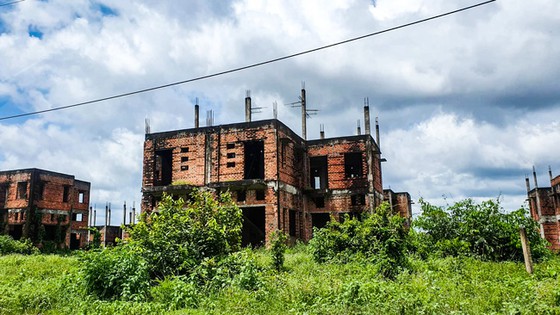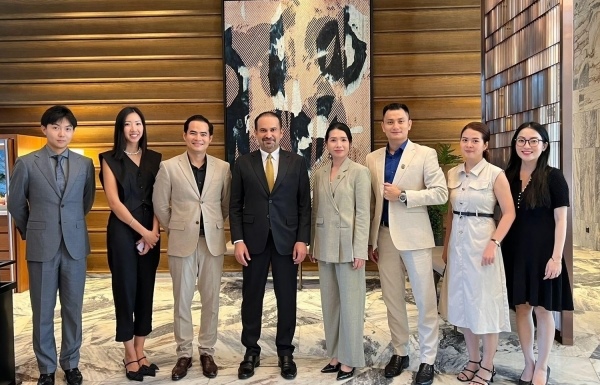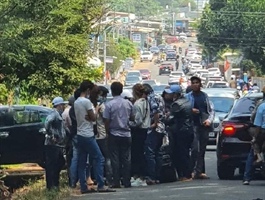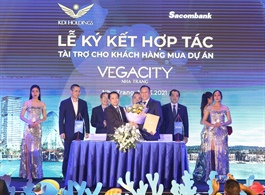Land Laws not in synch with economic reforms
Land Laws not in synch with economic reforms
(Saigon Investment) - The Land Laws in Vietnam are quite complex, even though the State lays special attention on the implementation of the same since they were first established.
An abandoned residential planning area in Nhon Trach, Dong Nai.
|
The first Land Law was passed by the National Assembly in December 1987 under the Renovation Policy, but because of lack of understanding the link between economic reform and land, the Land Law of 1987 did not do much to protect economic reforms. However, the Land Laws of 1993 and 1998 have gradually introduced issues related to land into the market reform mechanism.
No consensus in market
The biggest difficulty in developing a Land Law is in considering which legal corridor to effectively operate the universal land ownership in market mechanism. Ownership of the entire population means that it does not belong to any entity in society, including state agencies and organizations, let alone the private sector. Our initiative is not to operate land in the market, but to replace it with operating land use rights in the market. The Constitution nor the Land Law says much in this regard, but the current Civil Code Law defines property rights of land users. Although this concept is also a solution to solve difficulties, it has yet to create a consensus between market theory and practice.
The role of land in market economy is compared to a living organism, that of creating and nourishing life on earth. The land must be strongly mobilized to create positive activities that are related to nature, to human beings, to society, and in general to all activities on earth that are peaceful. A translation of Poet Che Lan Vien’s poem reads, that when we live, it is only a place for living, but when we leave, the land churns our soul. According to this perspective, land is represented by the human body, and land use rights are represented by the soul.
The second Land Law of 1993 created a legal framework to operate the market land use rights for individuals and households, mainly on agricultural land, by giving five main rights via either transaction, transfer, inheritance, mortgage, or lease to land user. This could be an initial but very basic solution to overcome difficulties for land use by households and individuals. This Land Law was amended in 1998, to further ease difficulties in land use by economic organizations, for profit and investment into the market mechanism.
The Land Laws of 1993 and 1998 stipulate, firstly, that the State tightly controls land in the primary market, through state agencies via land acquisition, land allocation, land lease, land use rights for current users, permission to change land use purposes, and land use extension.
Secondly, the State guarantees the rules of law for the safe management of land use rights in the secondary market among land users entitled to participate in the real estate market. In the primary market, the State acts as the person on behalf of the entire population in terms of ownership, and in the secondary market, the State acts as a manager to keep the legal order in all land transactions. Land transactions have been expanded from five rights to eight rights, with additional sublease, donation, and capital contribution rights. The land price determined by the State must be consistent with the value of the land on the market under normal conditions.
The fourth Land Law of 2013 has shifted from market access to strengthening the management powers of state agencies. One particular example is that, after receiving the transfer of land use rights in the secondary market, investors have to switch to leasing land from the State in the primary market. When formulating this land law, a big question arises as to why the State should manage the land. The strengthening of State powers always contains a greater risk of unchecked power and abuse. Therefore, cases of land corruption by many state officials have increased sharply in recent years.
The standard answer is that the State must also achieve its goals of efficient use of land as low efficiency of land use would be meaningless. This is the main problem posed in comparing approach to the market and approach to a tightly regulated state. The State has strict management in the primary market and ensures safety, efficiency, and health in the secondary market.
Clarify State authority
The amendment of the Land Law of 2013 should pay attention to legal solutions to continue to overcome the difficulties as analysed above. The first thing to do is to change approach to market access as before. Even in the primary market, the State must strictly manage land when exercising the powers of the entire people, and moving towards land supply to the secondary market so that corruption can be eliminated, and land used efficiently. The State only intervenes in the secondary market to operate in accordance with the law.
Thus, it is necessary to clearly distinguish two powers of the State, that of authority to decide on land and authority to manage land under the Land Law. Currently, the People's Committees at the provincial and district levels are exercising both these powers. This is making it very difficult to control power. People ownership of land is always associated with the requirement of distinguishing between land used for private and public purposes. The term "public land" is now commonly used in mass media, but looking at the law, every piece of land is public land. So with no clear distinction, it is easy for land corruption to pervade.
Thus, the amendment of the Land Law needs to clearly define the concepts for land for private purposes and for public domain. Land in the public domain includes land used by public organizations and people communities, land used for public purposes, unused land, and land not yet assigned or leased. Land used for private purposes could include remaining land used by economic organizations, non-business organizations, for purpose of economic activities, households, and individuals.
In order to control decisive power over land, all land governance institutions need to be concretized. Good governance institutions include four main factors, that of direct participation in management, publicity, transparency of information, and accountability of related state agencies to operate a monitoring and evaluation system. This system collects information to provide indicators to evaluate the effectiveness, efficiency and impact of management, and land use efficiency.
These factors are specified in Article 198, Article 199 and Article 200 of the Land Law of 2013. Up until now, the Government has not brought out any decree for guidance, and to say land is being used effectively has no basis. Hence, it is essential to incorporate Article 198, Article 199, and Article 200 in the market mechanism.





























